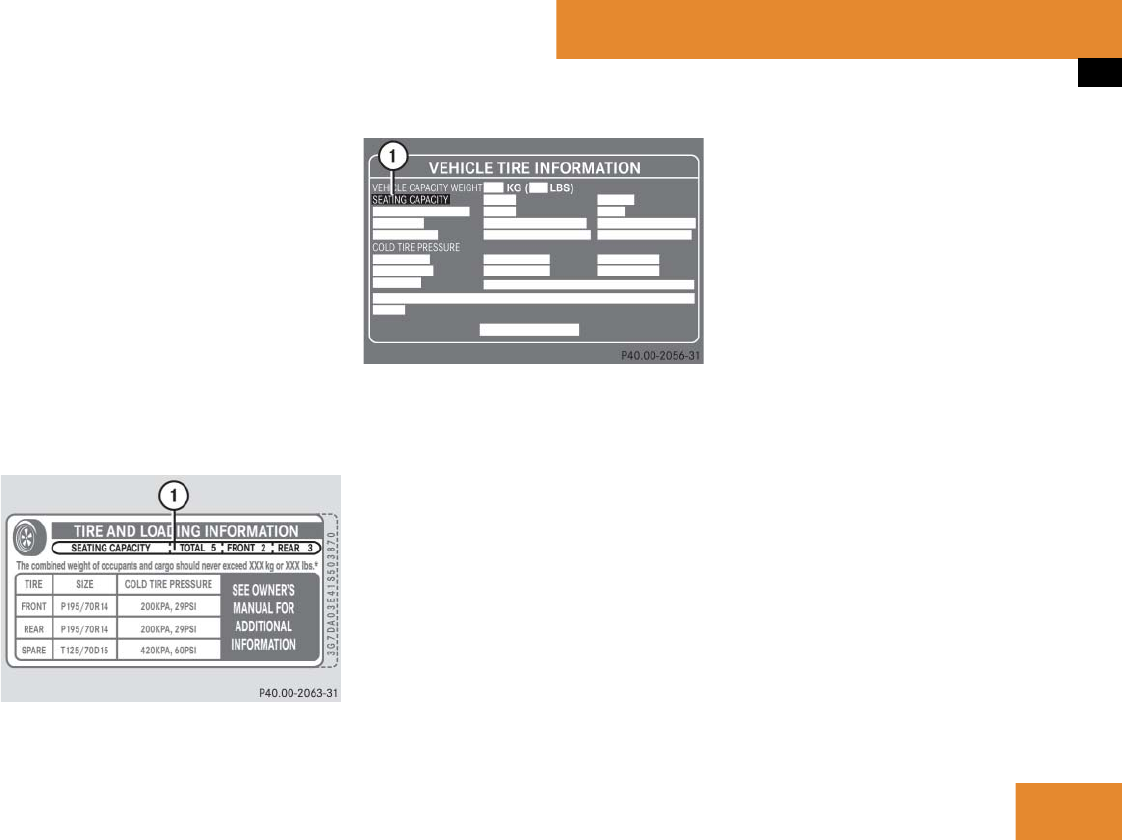
505
Operation
Tires and wheels
Seating capacity
The seating capacity gives you important
information on the number of occupants
that can be in the vehicle. Observe front
and rear seating capacity. Your vehicle is
equipped with either placard Example A or
placard Example B located on the driver’s
door B-pillar (
୴ page 503).
Placard (Example A)
1 Seating capacity
Placard (Example B)
1 Seating capacity
Steps for determining correct load limit
The following steps have been developed
as required of all manufacturers under
Title 49, Code of U.S. Federal Regulations,
Part 575 pursuant to the “National Traffic
and Motor Vehicle Safety Act of 1966”.
Step 1 (Vehicles equipped with placard
Example A)
̈ Locate the statement “The combined
weight of occupants and cargo should
never exceed XXX kg or XXX lbs.” on
your vehicle’s placard.
Step 1 (Vehicles equipped with placard
Example B)
̈ Locate the heading “Vehicle Capacity
Weight” on your vehicle’s placard.
Step 2
̈ Determine the combined weight of the
driver and passengers that will be
riding in your vehicle.
i
Data shown on placard examples are for il-
lustration purposes only. Seating data are specif-
ic to each vehicle and may vary from data shown
in the illustrations below. Refer to placard on ve-
hicle for actual data specific to your vehicle.
୴୴


















